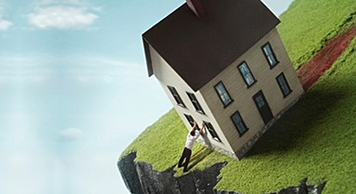 Economic Recovery after recession has been the slowest since World War in 1948. Governments policies in America have been aggressive for economic growth, while it seemed like that the Feds have used everything they had to make the economy grow, they suddenly introduced the Twist Operation. Operation Twist allows people to buy long term bonds and sell short term bonds; this action was carried out to increase the refinancing by offering a lesser rate of interest on long term bonds. This Operation Twist will increase the cash flow; such cash flow will help real estate, especially the housing business. This approach was well received. Although mortgage rates are expected to rise with this approach which may affect the housing business. Rates remain low, but the future rests with the level and rate at which they will increase. Owing your own home is considered to be an essential part of the American Dream. No matter how much the Government involves itself in a free market, most of the time; the results can be a disaster. Around 2003, More Americans became home owners. With demand came prices increase more thank the population did. The prices began to peak at the end of 2006 and beginning of 2007. These prices were very high at the end of 2007. Meanwhile there are other statistics which tell us more about what before this steep rise in prices, the ratio between median home prices and median income hovered around 3:1. For example, if an average home price was $90,000; average income was $30,000, a ratio of three to one. By early 2007, because home prices had risen much faster than incomes, this ratio expanded to over 5:1. Are the mortgage rates going to rise? Will an average home price continue moving upwards? Is the US Economy trying to make a comeback? For more information on the global property market, head to MIPIM March 11-14, 2014 in Cannes. Contact EAS for the best in meeting space, special events, hotels, rental apartments, luxury accommodation, restaurants, short term rentals, marketing and event management. For further information, click here.
The demand for top-quality commercial and residential property continues to increase in Africa down to continent’s strong economic growth, according to Knight Frank’s Africa Report 2013. Africa has recorded the average growth of over 5 percent per annum over the last decade and that has intensified its real estate market, it says. The strong economic progress will continue in the forthcoming months and will continue to make the populations, particularly in the largest urban centers, prosperous. The report says that large cities such as Accra, Nairobi, Lagos and Johannesburg and Lusaka are increasingly becoming the cornerstones of Africa’s economic growth and are thus attracting the mounting interest from the investors, developers and occupiers. Peter Welborn, Knight Frank’s head of Africa, said that the rising interest of global investors towards the emerging markets is increasing external investment in Africa more than ever. The report says that most of the under construction projects or those planned by private property developers are situated on the outskirts of large cities that reflects the need of greater volumes of good quality housing. The examples include La Cité du Fleuve scheme in Kinshasa and the Eko Atlantic scheme on Victoria Island in Lagos. It says that within the retail sector, the growing wealth and lavishness of the African buyers is leading to an increasing demand for luxury retail formats. In the recent years, the countries such as Kenya, Nigeria, Ghana and Zambia have witnessed a wave of retail construction activity that has given the first-generation of luxury western-style shopping malls to several mega cities. In the office sector, many large African cities lack the international standard buildings. This deficiency has led to extreme rent increase in the cities like Luanda and Lagos, where the demand of office space has been greatly increased following the arrival of international occupiers in the oil and gas sector. Over the last decade, the African economies have seen a significant diversification and the non-traditional sectors such as mobile industry have pushed the long-established oil and banking sectors behind to take the center stage. The technology boom in Africa has opened new sources of office market demand and there are now numerous emerging technology centers in the continent, such as Silicon Lagoon in Lagos and Silicon Savannah in Nairobi. For more information on the global property market, head to MIPIM March 11-14, 2014 in Cannes. Contact EAS for the best in meeting space, special events, hotels, rental apartments, luxury accommodation, marketing and event management. For further information, click here.
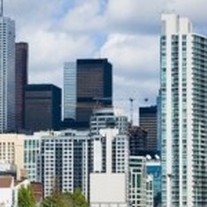 The average sale price in Canada has increased by 5% year to year and by 3.2% on monthly basis, the latest data from the Canadian Real Estate Association has shown. According to figures, the average price for homes sold in the country in June 2012 was $386,585, almost 5% higher than the same month last year. Home sales improved in almost all large urban markets over the last 12 months, with Victoria, Fraser Valley, Edmonton, Greater Vancouver, Montreal and Winnipeg reporting the biggest gains. Prices for single-storey homes rose by 3.1% year-on-year in June, pursued by town house and terraced properties, which witnessed an increase of 1.6%. The prices of apartments has grown by 0.4%. About 240,068 home transactions were recorded across the country in the first six months of this year, almost 7% below levels in the first half of 2012. Increase in mortgage interest rates is appeared as the prime reason behind the decline. While the gap between sales this year and last year is expected to reduce, the annual sales aren’t likely to go past the total sales of 2012. The number of newly-listed homes in Canada declined 0.5% month-on-month basis in June. While country’s most active urban markets like Edmonton, Quebec City, Oakville-Milton, Saskatoon, Hamilton-Burlington, Greater Vancouver and Winnipeg recorded rise in new listings, it was offset by a decline in new listings in numerous other large urban centers including Greater Toronto, Montreal, Fredericton, Fraser Valley, London & St. Thomas and Calgary. With sales activity increasing and new listings declining, the national sales to new listings ratio grew to 53.8% in June, 2% up from that of in May. For more information on the global property market, head to MIPIM March 11-14, 2014 in Cannes. Contact EAS for the best in meeting space, special events, hotels, rental apartments, luxury accommodation, marketing and event management. For further information, click here.
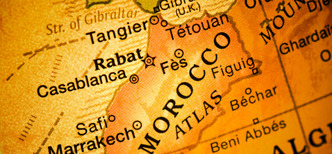 The Moroccan luxury property market is attracting domestic as well as wealthy foreign investors, a new report has found. The report from Aylesford International says that the country has witnessed significant economic growth over the last decade thanks to the strong macroeconomic policies. Morocco is one of the few countries in the wider North African region that have rarely experienced social unrest. Tourism and home industry are the most prolific industries of the country and are the keys to its economic stability. The report also says that there is now a considerable expat community in Morocco and the foreign residents are mainly from the European and Latin American countries. The country’s liberal inheritance laws, moderate property transaction costs and the provision of excellent, high-end properties are the key reasons behind their attraction towards it. However, recently, the economic performance of Morocco has witnessed deceleration due to the slow growth in European Union, particularly in Spain and France who are its main export partners. To that end, Morocco’s Budget in 2013 has imposed taxes on buying and selling the property. When buying a property, there is an agent commission of 2.5%, VAT of 10% Notary fee of 1% plus a Notarial tax of 0.5%. Additionally, there is also land registration fee of 3%-4%. When selling a property there is no particular inheritance tax but gift tax like Capital Gains may be levied at a flat rate of 20%. The minimum 3% has been imposed on the transfer of property. The Properties that are attracting foreign buyers include a 5-bedroom villa in Marrakech with two guest houses, a three hectare garden, tennis courts and pool priced at €2.9 million and a 4-6 bed villa in a private estate that includes a spa, a luxury boutique hotel and an 18-hole golf course, priced at €1.91 million. For more information on the global property market, head to MIPIM March 11-14, 2014 in Cannes. Contact EAS for the best in meeting space, special events, hotels, rental apartments, luxury accommodation, marketing and event management. For further information, click here.
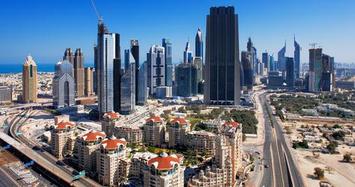 The property prices are increasing in Dubai’s popular locations as Emirate’s residential real estate recovery continues, a latest research has found. According to the latest data from global real estate firm Knight Frank, the rental values in Dubai rose more than anywhere else in the world in 2012, up 18.3% in the year to March. The overall property prices in the Gulf Region increased by up to 75% and the rental prices are up 20%. The average apartment sales prices in Dubai witnessed the rise of 12% in the second quarter of this year and are up 38% annually. Discovery Gardens emerged as the fastest growing area in the metropolis, with prices there soaring 75% in the last year to reach 7,550 ($2,055) UAE Dirham per square meter. In The Greens, prices rose by 44% to reach 2,400 Dirham per square meter. The most expensive area in the city – Downtown Dubai, where prices increased by 38% to 7,750 Dirham per square meter. John Stevens, the managing director of a property consultancy firm – Asteco Property Management – said any slowdown hasn’t been recorded in the leasing or sales growth or the transaction volumes in Emirates during the second half of 2013 and the new project launches have become a weekly event. The rental rates in the federation have witnessed increase as well, with average villa and apartment rates rising by 20% and 17% respectively over the last year. The highest price increase was recorded in Dubai, where a lease for a 2-bedroom unit increased 27% annually to an average of 42,500 Dirham. In the district of Dubai Marina, the average price of 2-bed apartment reached 110,000 Dirham after witnessing a rise of 20%. For more information on the global property market, head to MIPIM March 11-14, 2014 in Cannes. Contact EAS for the best in meeting space, special events, hotels, rental apartments, luxury accommodation, marketing and event management. For further information, click here.
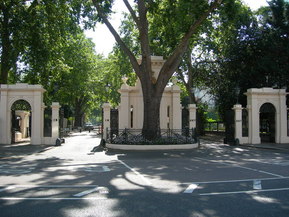 There are 8,230 million pound streets in Britain and London’s Kensington Palace Gardens is the most expensive among them, a recent research has found. The research, conducted by property website Zoopla, shows that over the last year, a range of million pound streets have increased by 23%. The average price of a house in Kensington Palace, home to Leonard Blavatnik, the second wealthiest man in UK, is £36,066,148 – 156 times more than the value of the average home in the country. The other nine most expensive streets of Britain are in London as well. These include The Boltons, where the average price of a house is £23,375,758, Grosvenor Crescent (£19,768,963), Courteney Avenue (£10,750,336), Compton Avenue at (£10,006,014), Frognal Way at (£9,513,716), Park Place Villas (£8,980,477) and Montrose Place (£8,980,468). London has the highest number of £1 million streets with 2,789, ranked highest amoung them is Richmond with 184, Guildford (118), Mitcham (100), Leatherhead (96), Beaconsfield (89), Harpenden (84) and Esher (83). The properties worth more than £1 million have been propelled to 323,684 in UK, up 32% from 245,790 a year ago, the research showed. Outside London, the most expensive area in Britain is Virginia Water in Surrey, where the average property value is £1,034,368. Also Surrey’s village Cobham is the second most expensive place outside capital with an average property price of £842,806. Football filled Chelsea takes third place with an average house price of £1,822,560.West Brompton and Notting Hill, where the average house price is £1,497,783 and £1,422,262 respectively, were ranked fourth and fifth respectively by the research. For more information on the global property market, head to MIPIM March 11-14, 2014 in Cannes. Contact EAS for the best in meeting space, special events, hotels, rental apartments, luxury accommodation, marketing and event management. For further information, click here.
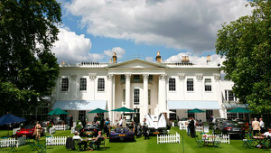 Rival Prime Central London Rival Prime Central London The prime property prices in central London increased by 0.4% in June and now up by 3.7% in 2013 to date, the latest data from property firm Knight Frank has shown. According to the figures, the price growth in central London has risen 6.9% over the past 12 months. The strongest price growth was seen in the sub £1 million price bracket where prices rose by 6.6% in the first half of the year. Marylebone and South Bank recorded the biggest price rises during June, up by 2.8% and 1.4% respectively. In Notting Hill the average property prices increased by 0.8% while in Knightsbridge, where the average price for a property is above £2 million, and Belgravia the prices remained static over the course of the month. In Mayfair the average cost of a prime home decreased by 0.2%. In the City Fringe, where the average property has a value under £1 million, prices rose by 7.8%. The data showed that the prime property prices in central London are about 60% higher than the market through in 2009. Over the last 12 months, the £1 million to £2.5 million price bracket properties have increased by 8.5% and by 5.4% in 2013. The £10 million-plus sector homes have increased by 4.5% up annually and by 1.5% over the year to date, with activity levels remaining healthy. Liam Bailey, global head of residential research at Knight Frank, described the higher stamp duty charge for £2 million plus properties, introduced in the last year’s budget, as the main factor behind the strong growth of lower price brackets. For more information on the global property market, head to MIPIM March 11-14, 2014 in Cannes. Contact EAS for the best in meeting space, event venues, and apartment rentals, hotels in the city center, marketing and event management. For further information, click here.
Women have a stronger grip over the Australian real estate market than their male peers, country’s recent Census figures have shown. According to data released by the Australian Bureau of Statistics, women are leaving the opposite gender behind them in home ownership. It states that more than 61% women have their own home compared with 58% of males. Though most of the professionals in real estate market are men but the positions they occupy lags them behind the women, who have penetrated in the industry with a faster pace in the recent years. A recent survey of 25 leading Australian real estate firm CEOs and directors stated that the females have “greatest say in the choice of property”. Most of the industry spearheads believe that both genders look the property at different perspective and when it comes to get a home to live in, women holds an edge over men as they look at more emotional, lifestyle side of things and there’s an emotional part of it that plays a vital role. It was observed that weather it relates to location choice, type of home or pricing decisions, women usually have the final say. The survey found that from selling perspective, the women are generally the lone decision makers and they rarely involve the male partners in their deals. The survey report shows women leading men in assisting in the understanding of the financial security offered by property ownership. The report also revealed that most of the women are leaving the people-oriented careers such as nursing and teaching to join the real estate industry. The Census figures also showed that the women assist men in paying off the mortgage, with 48% of single female household doing so compared with of 31% single male households. And when it comes to sole home ownership, the gap further widens with 65% of single female householders owning their home, compared with 55% of single male households. For more information on the global property market, head to MIPIM 2014 at Cannes. Contact EAS for the best in high quality accommodation, marketing and event management. For further information, click here.
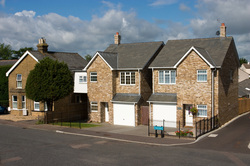 The housing prices in England and Wales increased by 0.1% in May compared with the previous month, the official Land Registry figures have shown. After the frictional rise, the average house price in England and Wales has been propelled to £161,969. The figures also show an annual price increase of 5% and that the repossession volumes decreased by 27% in March 2013 to 1,448 compared with 1,981 in the same month a year ago. Over the last 12 months, the greatest increase in average property value was experienced by London, where prices rose by 5%. The East Midlands region recorded the greatest monthly rise with an increase of 2%. The region with the most significant monthly price decrease was East England at 0.7% while Yorkshire and The Humber saw the greatest annual price fall with a decrease of 2.2%. The number of completed housing sales in England and Wales declined by 15% to 52,090 in March 2013, compared with 61,334 a year earlier, the most up-to-date available figures showed. Between March 2012 and March 2013, almost all the regions in England and Wales saw a decrease in repossession. North East was the region with a significant decrease of repossessions, which dropped by 39% in March this year compared with March 2012. The managing director of Phoebus Software – Paul Hunt – said that despite a row of economic barriers which have blocked the route to a full recovery, the escalation in house prices shows that the mortgage market is performing magnificently. For more information on the global property market, head to MIPIM March 11-14, 2014 in Cannes. Contact EAS for the best in quality accommodation, marketing and event management. For further information, click here.
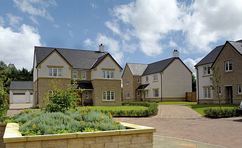 The average residential property prices are rising around the world except Europe, the figures from Knight Frank’s global house price index have shown. The figures showed that the prices in the global housing market increased by 6.6% on an annual basis, the highest growth rate since the second quarter of 2010. The global property prices rose by 2% in the first quarter of 2013, largely due to the strong performance of the Middle East Region, where the property prices rose by 10.6% on average. The largest rise on an annual basis was recorded in Hong Kong, where the prices rose by 28%, higher than they were a year ago. In China the prices increased the most on a quarterly basis, witnessing a rise of 10.7%. The United States recorded a price rise of 10.2%, its highest rate of annual growth in nine years, the international residential research organization evaluated. Overall, Europe was the world’s weakest performing region during the last 12 months, with the mainstream prices falling by 0.3% on average. Greece, Hungary and Netherlands were lowest performers in the continent as the property prices there declined by 11.8%, 9% and 8.3% respectively. The European countries that showed slight improvement in the property market were the United Kingdom and Ireland. In the UK, prices rose by 0.2% in the first quarter of 2013 while Ireland reduced the decline of 16%, it recorded a year earlier, to just 3%. South Africa was the strongest performer in the African continent, with the prices there rising by 11.3% in the first quarter, compared with falls of 3.2% a year ago. For more information on the global property market, head to MIPIM March 11-14, 2014 in Cannes. Contact EAS for the best in quality accommodation, marketing and event management. For further information, click here.
|








 RSS Feed
RSS Feed